Shoichi Hashimoto
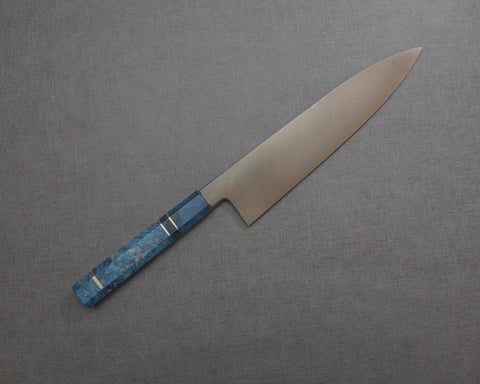
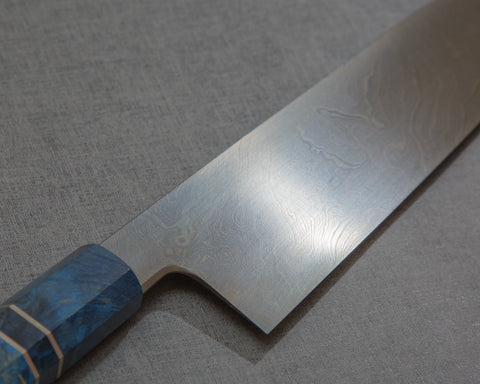
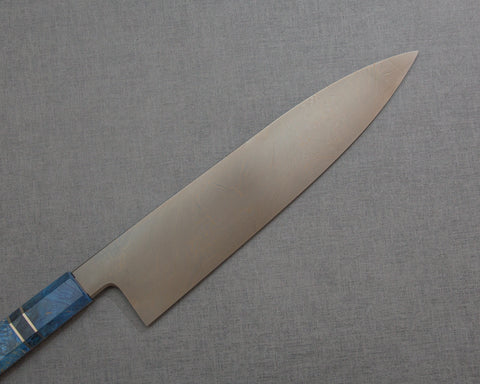
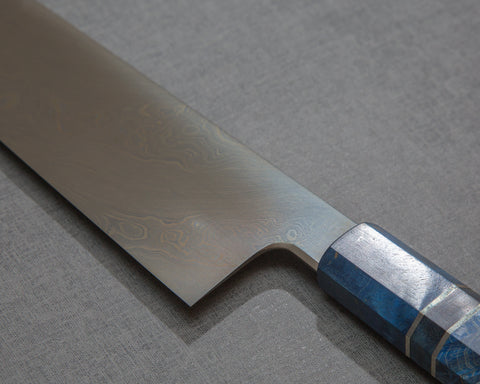
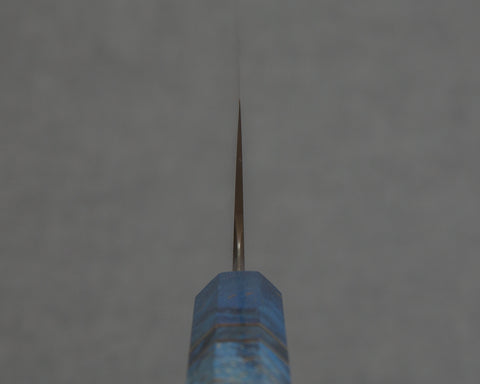
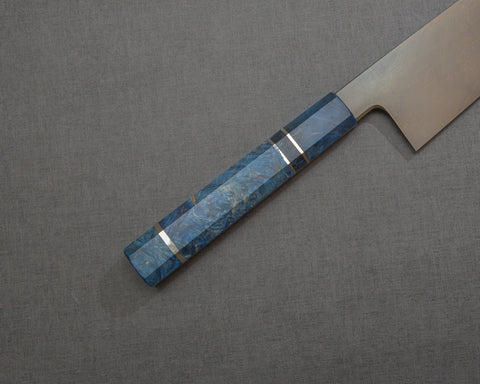
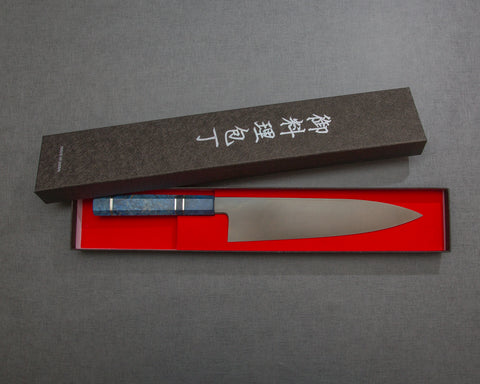
Shoichi Hashimoto "Tobikumo" Aogami #2 / Shirogami #2 Coreless Twisted Damascus 240mm Gyuto with Blue Stablized Wood Handle
Pickup currently unavailable
This luxurious Shoichi Hashimoto "Tobikumo" gyuto is a grand expression of the art of knife-making, featuring a combination of Aogami #2 and Shirogami #2 steel in a rare, dark yellowish steel body. Inspired by the twisted Damascus pattern that reminds the maker of cloud jumping through the sky, the knife was named "Tobikumo", which means "Cloud Jump" in Japanese. This captivating twisted Damascus design offers exquisite craftsmanship and an elegant, blue stabilized wood handle, making it a truly coveted piece.
Spec:
- Origin (Made in): Hiroshima-shi, Hiroshima Perfecture, Japan
- Artist: Shoichi Hashimoto
- Knife Type: Gyuto
- Blade
- Construction: Coreless Damascus
- Grind: Double-edged Blade (50/50 Grind)
- Hagane (Core Steel): Aogami #2 (Blue #2) & Shirogami #2 (White #2)
- Jigane (Cladding): Soft iron
- Hardness: 62-63 HRC
- Hand-forged, hand-ground, hand-sharpened
- Blade Finishes: Artisan-grade Damascus
- Blade Length: 240mm (9.4")
- Blade Height (at heel): 54mm
- Spine Thickness
- Above heel: 3.4mm
- Middle: 2.1mm
- Handle
- Premium Custom Handle
- Shape: Hachikaku (Octagonal)
- Material: Stabilized Wood
- Color: Blue
- Ginmaki: Nickel Copper (x3)
- Length: 145mm
- Overall Length: 397mm
- Weight: 209g (7.37oz)
About Shoichi Hashimoto 橋本 庄市
Master Shoichi Hashimoto (橋本 庄市) is a distinguished figure in high-end Japanese knifemaking, celebrated for his skill in crafting both artistic Damascus steel and high-performance chef knives. His journey into knifemaking is rooted in a lifelong fascination with edged objects and a deep understanding of metallurgy. Unlike most of blacksmiths in Japan, master Hashimoto received higher education in a university, and discovered Damascus steel making while obtaining art degree. Hashimoto became a respected Damascus Artist in Japan, combining his art foundation with deep knowhow of metallurgy. Describing himself as a “Modelling Knifemaker,” Hashimoto approaches knife making with an artistic and sculptural sensibility. He is a one-man operation, designing, forging Damascus steel, and sharpening each blade, demonstrating his commitment to quality. His knives showcase a blend of art and function, making him sought-after by knife collectors.
Care:
Aogami #2 (Blue #2) steel and Shirogami #2 (white #2) are premium Japanese high carbon steel for knife making. Despite some corrosion resistant quality (for a carbon steel), it is not stainless, therefore you should wipe your knife dry after each use. Patina will develop over time. Rust may develop if left in prolonged contact with water or acidic food. Use a rust eraser to clean if rusts develop. Avoid cutting into bones, frozen foods, hard fruit pits.
Cutting Surface:
Recommended cutting surface: wood, rubberized boards and high-end composites, and quality plastics such as polyethene make acceptable cutting surfaces, and will help protect and prolong knife’s edge. AVOID glass, metal, countertops, and other rigid, non-forgiving surfaces.
Sharpening:
We recommend sharpening all quality Japanese knives on whetstones, as we believe they yield the best results for your knives.
Free Shipping
Free Shipping on most orders.
30 Days Return
Return unused within 30 days for a full refund, no questions asked (terms apply).
Top Japanese Makers
All knives made in Japan by top Japanese knife makers.
About
Burrfection Store sources professionally designed sharpening products, and knives from top Japanese craftsmen.
